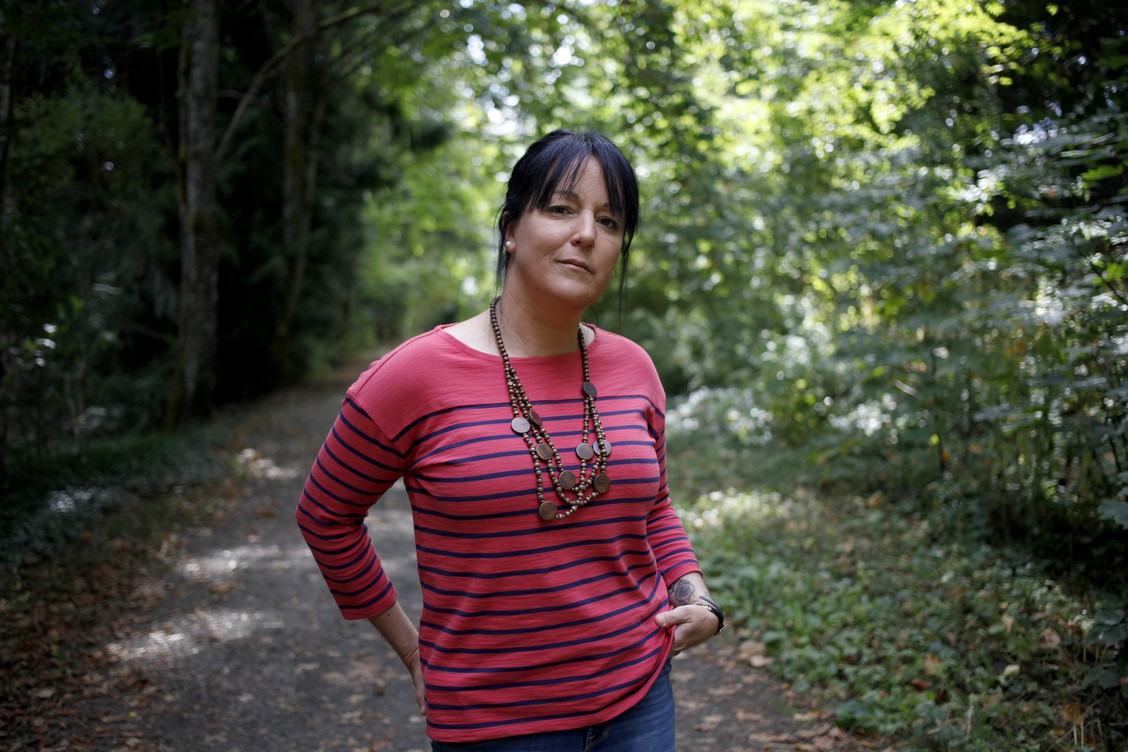
Stories
"This can never happen again.” How a BC teacher took charge of her diabetes management
After a severe hypoglycemia incident, Carla Hoger switched to an insulin pump. Insurance and Pharmacare won’t cover the continuous glucose monitoring she needs. Just before her 23rd birthday,...

Just before her 23rd birthday, Carla Hoger was diagnosed with type 1 diabetes. “I had classic symptoms. I was exhausted and couldn’t quench my thirst. When I couldn’t even get out of bed for work, my mother took me to the hospital where I was diagnosed immediately.”
That was a month before Carla was supposed to leave to start working as a teacher in England. “I was so scared – I thought my life was over, that I’d have to stay put forever. But I told myself I can’t let this disease stop me from doing anything.”
That was fourteen years ago. Carla, now a Grade 6 teacher living in Duncan, has experienced much in her journey living with type 1 diabetes. And being a teacher has meant more unforeseen challenges.
“After I was first diagnosed, I was injecting insulin,” Carla says. “For a good while I tried to hide it from my students, and even my peers. I didn’t want them to worry about me. And with the kids, who knew what they’d think about seeing a needle? I was just self-conscious.”
“Managing my blood glucose levels isn’t always easy because there are so many factors to consider. As a teacher, you have to eat regular meals – and I’ve always had a healthy diet. But there are always going to be days where things are too hectic.”
In 2010, one of those days changed her life. “Staying active to manage my diabetes is crucial for me. So I always volunteer for extracurricular activities. One day we were out skiing for a field trip. There were tons of stressors, and a lot going on. I remember – I had a healthy lunch, but I injected my insulin and skipped checking my blood glucose levels altogether – huge mistake. ”
Two hours later, she was hunched over on a bench in the chalet, experiencing severe hypoglycemia – low blood glucose. “I didn’t know where I was. I felt sick. I had cold sweats, and no sense of my surroundings. The principal found me and called an ambulance immediately, overtime I have put the pieces of those crucial moments together in my mind with those that helped me and basically saved my life. “’This can never happen again’ I told myself.”
Carla began researching insulin pumps and made the switch to one not long after.
Carla started using CGM in 2014. CGM (Continuous Glucose Monitoring) measures glucose in consistent intervals via sensors under the skin. “Compared to the needles, I thought it was great. But I still had highs and lows, which affected my work to some degree. In the highs I would be fatigued and a bit moody; in the lows I would feel weak.”
“Then in September 2019, I went on the new hybrid closed loop (HCL) system and it completely changed everything.” A hybrid closed loop, or self-adjusting, insulin pump automatically adjusts a person’s background (basal) insulin levels, based on CGM readings. Some user interaction is required. Currently, the Medtronic MiniMed TM 670G is the only HCL pump licensed by Health Canada, though others are expected to be authorized as well.
“The control of my blood sugar is much better,” says Carla. “I used to be in [glucose] range about 19 percent of the time, but now it’s around 75 to 80 percent.” We all understand the stress of daily decision-making. Especially when those decisions are important. And people with type 1 diabetes make on average an extra 180 decisions each day related to how to manage diabetes and keep glucose levels in the optimal range.

As someone used to years of constantly thinking about her diabetes management, it was a pleasant surprise for Carla to think about it a little less. “You have to let go and allow the pump to do what it needs to do and I’m extremely happy with it now.”
Carla has also become more confident, taking opportunities to educate students and her colleagues where before she might have been sheepish. “Rather than hide things, I have an open discussion about type 1 diabetes with my students so they know what it is and what my pump is. And I always let new staff know about my diabetes – it’s as much about education and awareness as it is preparedness.
What’s on Carla’s mind now, however, is money.
It took Carla and her doctor eight months to get her new pump covered by BC PharmaCare. And although her private insurance covers a portion of the pump, neither covers the CGM component. That means she has to pay out of pocket. “My benefits as a teacher here are pretty good – but insurance and PharmaCare say that CGM is an extra because I could use finger pricks”
To Carla, it’s worth it. But she can’t help thinking of the financial pressure it puts on her both now, and down the road.
“I know I need it, but should I have to choose between saving for retirement or paying for my health?”
JDRF Canada is campaigning to make CGM affordable and accessible. Learn more or send an email to your provincial representative at .
This story was created by Content Works, Postmedia’s commercial content division on behalf of Medtronic


